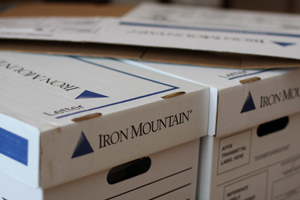#16 Claiming Expenses
Feb 9th, 2009 by pfi
 As a professional pastime, accountants are experts at claiming expenses. This practice has also been called expensing it, charging it, running it through, and so on. Accountants call it whatever they want since it’s a perk of the job, though the IRS doesn’t need to know that.
As a professional pastime, accountants are experts at claiming expenses. This practice has also been called expensing it, charging it, running it through, and so on. Accountants call it whatever they want since it’s a perk of the job, though the IRS doesn’t need to know that.
Here’s how it works:
1.) Buy something possibly work related
2.) Claim it as an incurred, necessary expense
3.) Profit!
Accountants, as you can imagine, have claimed or tried to claim pretty much everything over the history of time. Legitimate claims include meals, mileage, office supplies, airline tickets, recruiting, etc.
Accountants are so good at this pastime of theirs that everything gets upgraded and overspent. Meals become full course feasts with enough extras to take home for days. Airline tickets involve upgraded seats and extra luggage. Recruiting is a special circumstance since there is no limit to spending and any fixed “budget” is merely a suggestion. Recruiting says $50 per person and the accountant knocked the bill out of the ballpark? No problem.
Note that the above examples are only a fraction of what gets run through and claimed as expenses. There is no limit really to what qualifies. Cell phone data plans, professional publications, rental car upgrades, and bar tabs are only the tip of the iceberg for claimed expenses.
Of course in this economy, all companies are trying to reduce costs and survive. The reality is that companies with big egos need to maintain an expensive image to recruit future accountants, who work and claim outrageous expenses.
All you need to know is that if an accountant offers to “run it through” during your lunch, you should feel free to order whatever you want and maybe the dessert as well. The accountant won’t care, you don’t care, and the Company paying for it doesn’t care since it’s immaterial.
 If accountants had their way, everything would be immaterial.
If accountants had their way, everything would be immaterial.
 From
From  Training is important to accountants, but not for the reasons typically listed. Keeping up to date on the latest accounting standards, improving soft skills, utilizing new software – nobody cares. All the real learning is done on the job anyways.
Training is important to accountants, but not for the reasons typically listed. Keeping up to date on the latest accounting standards, improving soft skills, utilizing new software – nobody cares. All the real learning is done on the job anyways. Now, we have the opportunity to discuss accounting fundamentals. Forget everything you thought you knew about accountants: debits, credits, even addition and subtraction. None of that actually matters in practice. Accountants rely on Tickmarks and equally, if not more important, Tickmark Legends, to accomplish anything. Accountants have to take a pen that dollar stores would be embarrassed to sell and use it to mark up workpapers into a frenzy of ink to signify work was performed. Note that overachieving accountants make Tickmarks in Excel or Word.
Now, we have the opportunity to discuss accounting fundamentals. Forget everything you thought you knew about accountants: debits, credits, even addition and subtraction. None of that actually matters in practice. Accountants rely on Tickmarks and equally, if not more important, Tickmark Legends, to accomplish anything. Accountants have to take a pen that dollar stores would be embarrassed to sell and use it to mark up workpapers into a frenzy of ink to signify work was performed. Note that overachieving accountants make Tickmarks in Excel or Word. A fashion staple for accountants is the document retention box. You will find document retention boxes all over the place at offices and homes of accountants. Nothing says “I have lots of work to do” as clearly as stacks of boxes filled with binders, workpapers, and office supplies.
A fashion staple for accountants is the document retention box. You will find document retention boxes all over the place at offices and homes of accountants. Nothing says “I have lots of work to do” as clearly as stacks of boxes filled with binders, workpapers, and office supplies.
 While accountants are known
While accountants are known  Among office supplies frequently used range from the everyday pen and paper to more specialized tools like the Post-It Flag. These flags are thin strips of adhesives used to denote special pages. Accountants depend on post-it flags and will easily go through decks upon decks of flags to remind themselves that there is still lots of work to be done.
Among office supplies frequently used range from the everyday pen and paper to more specialized tools like the Post-It Flag. These flags are thin strips of adhesives used to denote special pages. Accountants depend on post-it flags and will easily go through decks upon decks of flags to remind themselves that there is still lots of work to be done.